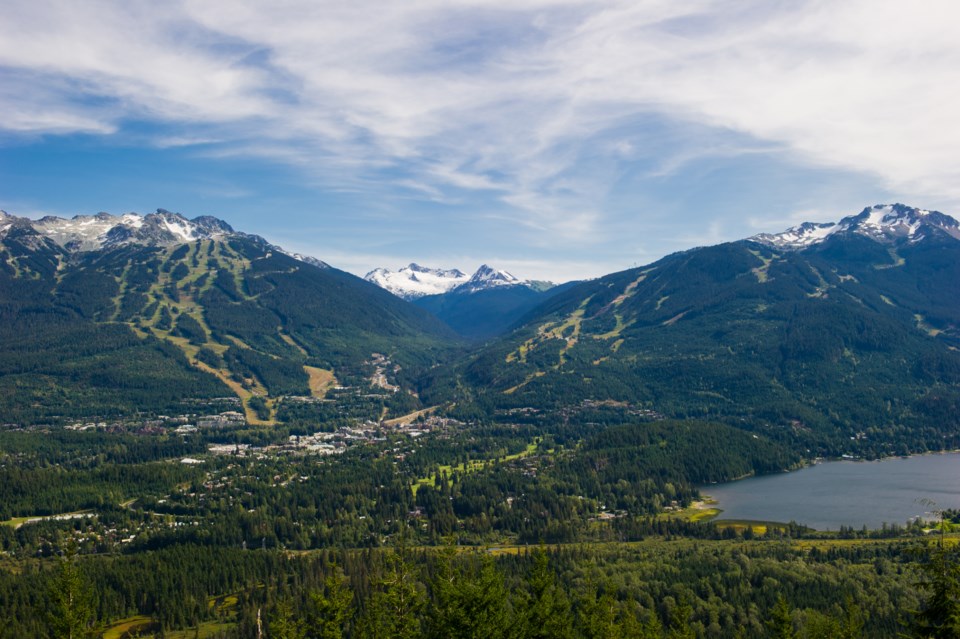The Resort Municipality of Whistler (RMOW) is no stranger to asset management—in 2019, the RMOW completed an Asset Management Investment Plan highlighting the community’s $810-million worth of infrastructure assets.
Now, a new initiative aims to add the value of Whistler’s natural assets to the ledger.
But the Municipal Natural Assets Initiative (MNAI), as it’s known, doesn’t seek to put a dollar value on all the trees, rivers and watersheds in Whistler, but rather the systems they support.
“The core idea of natural asset management, and of our work, is that nature’s natural assets can provide to local governments the same services that they would otherwise have to deliver via an engineered asset, and moreover can sometimes do this at a lower cost and with greater reliability,” said Roy Brooke, executive director of the MNAI.
Take a wetland, for example. Its biological function might be to store water, but that function translates directly to the work—and budgeting—of municipal governments, Brooke said.
“It could translate into core services like flooding reduction, improved surface water quality or a range of other services that they’re on the hook to deliver anyway,” he said. “What it basically says is look, if you have natural assets for which you have paid nothing … then this is something you need to take really seriously, and that you need to understand and approach with some intention.”
The Town of Gibsons on the Sunshine Coast was the first in North America to experiment with how natural assets can integrate into financial planning, Brooke said, adding that the MNAI now works with more than 90 communities across Canada.
At a high level, the MNAI involves six steps: Develop policy statements that consider natural assets; identify key assets and the services they provide; determine their condition and do an initial valuation; prioritize the assets using risk identification; determine what scenarios you want to understand; and start managing your natural assets.
In Whistler, the work is just getting underway, said environmental stewardship manager Heather Beresford, noting that step one is already completed by way of the updated Official Community Plan.
“We’ve done a readiness assessment with (the MNAI), which is looking at what kind of systems do we have in place to be able to integrate this into our planning and into our asset management and budgeting process,” Beresford said. “So mainly at this point they’re focusing on drinking water delivery, stormwater management and flood mitigation.”
The biggest risks to Whistler’s natural assets are posed by climate change, Beresford added: longer, hotter, drier summers leading to increased wildfire risk and drought in the summer, and more heavy rain events in the winter leading to flooding.
“So we want to make sure that our riparian areas, our watersheds are in good shape so that they can absorb that extra rain, and deal with it if and when there’s a flood so that it can move the water out,” she said.
In the summer, the River of Golden Dreams and other wetlands act as “massive sponges,” Beresford added.
“So if you have been compromising the areas that can soak up the water by putting too much urban development in the wrong place … then you don’t allow those lands to act like sponges, so your drought situation becomes more severe,” she said. “So those are the kinds of things that we’re trying to plan for now so that in 20 years from now we’ll still have adequate water and won’t have massive flooding problems.”
The current budget for the work is $20,000, offset by a $15,000 grant from the Union of BC Municipalities.
While Whistler has done “a lot of good things” around protecting the natural environment over the years, the MNAI will help elevate awareness of the resort’s natural assets, Beresford said.
“So in our overall asset management planning program, it will have the Meadow Park Sports Centre, and then it’s going to have the River of Golden Dreams in that same list of things,” she said. “And what it means is that now every year we are looking at where are our areas of concern are coming up, and then saying, ‘Hmm, we need to budget for that and make sure that we are correcting it.’”
The Association of Whistler Area Residents for the Environment (AWARE) is “very supportive” of and excited to see the MNAI work taking place, and its concepts could even be taken a step further, said executive director Claire Ruddy, noting that, according to surveys, nature is consistently ranked as the top reason people visit Whistler.
“We understand that at a visceral level, but it doesn’t really get reflected in the way that we manage our community fiscally, and so that means that we have a gap,” she said.
Expanding on the MNAI process might look similar to a 2016 economic impact study conducted by the Whistler Off-Road Cycling Association, which found that local mountain bike trails generate $46.6 million in visitor spending every year.
Could a similar study be done to help quantify the value of Whistler’s nature?
AWARE has been “liaising with some academic institutions” to understand what that might look like, Ruddy said.
Read more at mnai.ca.




